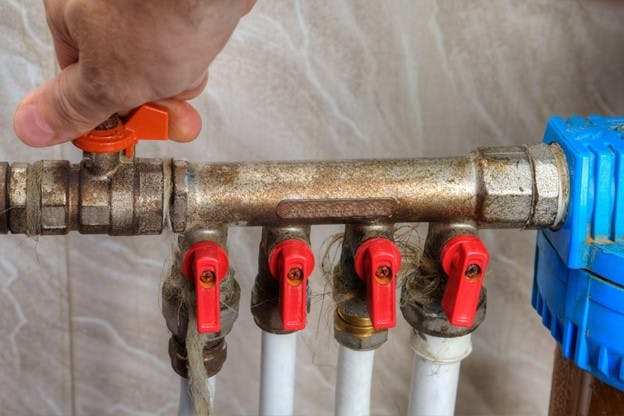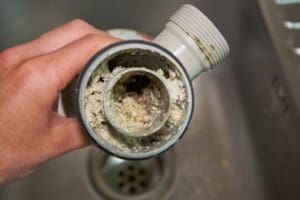Tested Strategies for Resolving Low Water Pressure in Your Home
Tested Strategies for Resolving Low Water Pressure in Your Home
Blog Article
The article following next relating to 4 Ways to Troubleshoot Low Water Pressure is definitely interesting. Give it a try and draw your own results.

Low water pressure in your house can be a discouraging issue, affecting whatever from bathing to cleaning recipes. If you're experiencing weak water flow, there are numerous possible reasons and options to discover. In this guide, we'll discuss common factors for low water pressure and sensible actions to resolve the issue efficiently.
Introduction to Low Water Stress
Low water pressure takes place when the flow of water from your taps, showers, and various other fixtures is weaker than typical. This can make day-to-day jobs extra difficult and less effective. Recognizing the root causes of low water pressure is crucial to finding the ideal option.
Common Sources Of Low Tide Pressure
Faulty Stress Regulators
Stress regulators are accountable for keeping constant water stress in your house. If they malfunction, it can result in low tide stress or irregular flow throughout your house.
Metropolitan Supply Of Water Issues
In some cases, the issue lies outside your home. Municipal supply of water problems, such as main line leakages or upkeep work, can temporarily reduce water stress in your area.
Pipe Obstructions
Gradually, pipelines can come to be clogged with natural resource, sediment, or particles, restricting the circulation of water. This is a common concern in older homes with galvanized steel pipes.
Corrosion
Rust within pipelines can cause leaks and decreased water pressure. Corrosion build-up can restrict water circulation, specifically in maturing plumbing systems.
How to Diagnose Low Tide Pressure
Examining Pipelines
Check noticeable pipelines for indications of leakages, deterioration, or blockages. Take note of any unusual sounds, such as banging or rattling pipes, which could show problems within the plumbing system.
Consulting with a Plumber
If you're not able to identify the root cause of low tide stress, consider working with a specialist plumber to carry out a thorough evaluation. They can determine underlying problems and suggest appropriate services.
Checking Faucets and Components
Beginning by evaluating the water pressure at various faucets and components throughout your home. If the issue is isolated to particular areas, it might indicate local problems.
DIY Solutions to Deal With Low Tide Stress
Flushing Water Heater
Sediment buildup in the water heater can restrict circulation and decrease performance. Flushing the tank periodically assists eliminate debris and keep ideal efficiency.
Examining Stress Regulator
Make certain that the pressure regulatory authority is functioning appropriately. Changing or changing the regulatory authority can assist bring back correct water pressure throughout your home.
Cleaning Aerators and Showerheads
Mineral deposits can build up in aerators and showerheads, lowering water circulation. Eliminate and clean up these parts frequently to improve water stress.
Clearing Clogs in Pipes
For small obstructions, try making use of a plumbing serpent or chemical drainpipe cleaner to clear obstructions in pipelines. Be cautious when using chemicals and adhere to safety standards.
When to Call a Specialist Plumber
If do it yourself initiatives fall short to resolve the problem or if you suspect significant plumbing issues, it's ideal to look for help from a certified plumber. They have the experience and tools to resolve complex issues securely and efficiently.
Safety Nets to Preserve Water Pressure
Mounting a Stress Booster
Consider installing a pressure booster pump to boost water stress in locations with consistently low circulation. This can be particularly useful for multi-story homes or residential properties with high-demand fixtures.
Surveillance Water Usage
Be mindful of water use routines and stay clear of ill-using the plumbing system. Straightforward adjustments, such as staggering showers and laundry loads, can assist keep appropriate water stress.
Regular Upkeep
Set up routine upkeep for your plumbing system to prevent issues such as corrosion, leaks, and clogs. Resolving small problems early can assist avoid more considerable fixings in the future.
Conclusion
Managing low water pressure can be aggravating, yet recognizing the underlying reasons and implementing ideal services can bring back optimal circulation throughout your home. Whether it's cleaning aerators, examining pipelines, or seeking advice from a plumber, taking proactive steps can guarantee a stable supply of water for your daily demands.
FOUR WAYS TO FIX LOW WATER PRESSURE NOW
Turning on a shower or faucet only to find the water comes out in a sad, slow drizzle is never a good feeling. How exactly are you supposed to wash a pan or take a quick shower when it takes 10 minutes just to rinse off a little soap? The good news is that when your water pressure is bad, there's always a cause: typically one that can be easily fixed. Here are some of the most common causes of low pressure and what you can do to fix the issue:
DEBRIS AND MINERAL DEPOSIT BUILDUPS
If you notice low water pressure from just one or two of the fixtures in your house, the problem likely has to do with debris buildup. Water is full of minerals and other debris, all of which can accumulate in your pipes and on your fixtures. This can cause a blockage that affects how much water flows through. To fix this, try filling a small plastic bag with white vinegar, and use a rubber band to hang it around your showerhead or faucet. Let the head of the fixture soak for a few hours, and the vinegar should loosen the deposits.
WATER LEAKS
Leaks are another common cause of low water pressure. If water is flowing out of your plumbing through a hole or crack before it can reach your fixture, the pressure coming out of the faucet or showerhead will be lower. A plumbing professional is your best bet for finding and repairing a leak in your water supply pipes.
Leaks are another common cause of low water pressure. If water is flowing out of your plumbing through a hole or crack before it can reach your fixture, the pressure coming out of the faucet or showerhead will be lower. A plumbing professional is your best bet for finding and repairing a leak in your water supply pipes.
A VALVE ISSUE
If you have low water pressure throughout your home, check your main shut-off valve to make sure it's completely open. You may also want to see if there's a pressure-reducing valve installed. If there is, have a plumber help you adjust the settings to get the pressure you're looking for.
OTHERS USING WATER
Believe it or not, your low water pressure could be caused by your neighbors. If you notice low pressure at certain times of day, it may be because you and the people living next to you have similar schedules - when everyone is showering at the same time, the pressure will be lower in every home. Low pressure throughout the neighborhood may also be caused by an issue with your municipal water supply. If that's the case, call the supplier to see if they're working on the issue.
https://www.rotorooter.com/blog/water-leaking/low-water-pressure-fixes/

I'm certainly very interested in 10 Reasons for Low Water Pressure in Your House and I hope you enjoyed reading the blog entry. Make sure you take the time to promote this blog posting if you liked it. Thanks for your time invested reading it.
Call Report this page